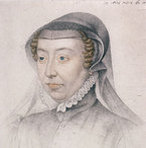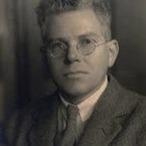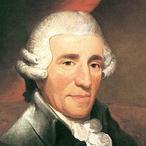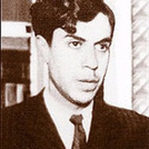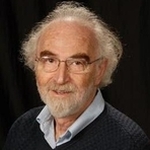|
Today the Wigmore Hall once again played host to the sultry voice of Venetian Contralto Sara Mingardo. The theme of the concert was a songbook of Ancient Italian Airs, compiled by Alessandro Parisotti, with a couple of interlopers such as an aria from Handel’s Alcina. The song book includes an air attributed to Giovanni Pergolesi, “Se tu m’ami”, which is now believed to have been composed by Parisotti himself. The song book, called Arie antiche: ad una voce per canto e pianoforte and published in 1890, was Parisotti’s major claim to fame.
Performing with Mingardo were Benjamin Bayl, harpsichord, and Richard Sweeney, theorbo. Benjamin Bayl is usually seen in the role of conductor having taken part in productions such as Il parnaso confusoat London’s South Bank Centre and a critically acclaimed Ariodante with English Touring Opera. Richard Sweeney has extensive performance experience, having played with renowned ensembles including The Kings Consort, Orchestra of the Age of Enlightenment, Academy of Ancient Music, and Les Talens Lyriques. The first composer selected by Mingardo was the Neapolitan Andrea Falconieri. Of the two song chosen it was the second, “O bellissimi capelli”, which made the greatest impression. Mingardo’s lilting, smooth voice flowed through the verses, while the intuitive accompaniment from Bayl and Sweeney ensured the light dynamic of the piece was well supported. Next was Antonio Lotti, a composer hailing from Mingardo’s native Venice, who thought to have influenced Johann Sebastian Bach and George Frederic Handel. The air chosen, “Pur dicesti, O Bocca bella”, was tenderly sung, with some beautifully light touches on the arpeggios. Two more Venetians followed on from Lotti. “Sebben crudele”, by Antonio Caldara, is a famous piece, sung by most singers of all fach at one point in their careers. It was performed with dramatic flair by Mingardo, whose ardent, lyrical presentation, and intelligent ornamentation, communicated perfectly the emotion of the piece. Vivaldi’s “Un certo non so che” was next, and it was here that Mingardo moved to a more “operatic” execution. The melancholic “Quella fiamma che m’accende”, by Benedetto Marcello, provided the first opportunity for Mingardo to show off her rich, powerful lower register. The dives into the chest voice were both fierce yet controlled, with Mingardo in complete control of her instrument. The disputed “Se tu m’ami” was as emotive, yet it was more intimate, almost conversational in its delivery. Mingardo and Bayl then left the stage, leaving Richard Sweeney to perform Alessandro Piccinini’s beautiful Toccata IV for theorbo. Sweeney’s playing bought out the lilting nature of the piece, and it reminded me of being on a long train journey, through the countryside, watching the landscape out of the window. Mingardo and Bayl returned to finish the concert with four contrasting songs. The first, “Intorno all’idol mio” by Antonio Cesti, saw Mingardo’s warm, rich tone project powerfully through the hall. After this came Handel’s “Ah, mio cor, schernito sei” from the opera Alcina, which was the highlight of the concert. The dark, passionate phrases were beautifully handed, and there was a lovely resonance in Mingardo’s lower register. Another opera aria, “Se il ciel mi divide” from Niccolò Piccinni’s Alessandro nell'Indie, was the penultimate offering from the trio, with Mingardo at her most aggressive, modulating the dynamic spectacularly in the syncopated sections. The last piece was “Nel cor più non mi sento” by Giovanni Paisiello. Mingardo managed to make the wistful, dreamy music engaging, imparting the nostalgic remembrances of an older person remembering the fires of youth. The encore was the delightful “'Si dolce e'l tormento” by Claudio Monteverdi. It was an excellent way to end the concert, with each of the trio bringing an educated understanding to this frequently performed song. The last verse was so tender, that one was left with a lightness of being which lasted past the end of the fading chords. It was a delightful concert and another elegant triumph for Mingardo.
0 Comments
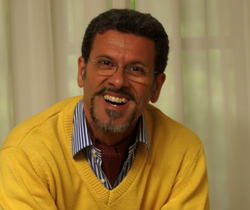 Lucio Gallo, baritone Lucio Gallo, baritone Tonight’s Rosenblatt Recital saw Baritone Lucio Gallo perform songs and arias by composer Sir Paolo Tosti. Gallo has performed in many of the major opera houses in the world, in roles such as Don Pizarro, Falstaff, Don Giovanni, and Iago, which Gallo believes to be “one of the most interesting roles written for a baritone.” It was, however, at the recent performance of Puccini’s Il Trittico that I first became aware of Gallo’s talents. Gallo is no stranger to the Rosenblatt Recitals series as he performed there in June 2009. Then, he presented a range of composers, including Mozart, Verdi and Tosti. This time, Gallo will be showcasing Tosti’s arias and songs. Gallo had this to say about the program: "I have always liked the music of Tosti but in the past I always made a point of singing music by several composers in my recitals, apart from lieder cycles of course. Then after my Rosenblatt recital in 2009, I had a long talk with Ian Rosenblatt about doing another recital and when he expressed his passion for Tosti, I suggested doing an entire concert of his music." Tosti had an interesting and varied career. After showing early promise as a student teacher, Tosti fell ill, and had to leave his post as student teacher. When Tosti moved to Rome, his fortunes changed. Giovanni Sgambati, who became his patron, introduced him to the future Queen of Italy, who appointed him as her singing professor. Tosti moved to England in 1875, where he became singing master to the royal family, and later became a professor at the Royal Academy of Music. He became a British Citizen in 1906, and was knighted by King Edward VII in 1908. He died in Rome in 1916.
One of the problems with presenting a recital with only one composer represented is that the style and emotional content can become repetitive. With Gallo and Tosti, this was most definitely not the case. Gallo’s dramatic and engaging style perfectly complemented Tosti’s expressive songs. Tosti’s works display both a full knowledge of the emotional spectrum and an excellent understanding of the vocal instrument. The recital began with the Due piccolo notturni, of which the second, “O falce di luna calante”, was the most engaging. Gallo’s voice opened wonderfully on the high phrase “non canto, non grido”, while fading away to almost nothing on the final “chiarore qua giù”. This was followed by the Tre Romanze, three songs with words by Rocco Emanuele Pagliara. Gallo’sforte optional G4 on the final “fugge l’amore!” contrasted wonderfully with the ppp C3’s on the final phrase. The most powerful song in this set was the beautiful Malia which, with a range of just one octave, showcased Gallo’s superb acting skills. Due Melodie francesi can next, and contained an absolute gem of a song: “Ninon”. The duplet quavers which appeared thought the 6/8 piece gave it a pensive, introspective feel, while the understated piano accompaniment added to the atmosphere of the song. The passage “Ouvrez-vous, jeunes fleurs…si vous avez aimé” was powerfully sung by Gallo, while the following phrase, “Et vous aurez vecu…” was performed with haunting tenderness. The Due Romanza which followed featured the Melodic “Non t’amo più”, was originally dedicated to Gladys, Countess of Lonsdale. Again, Gallo’s ability to produce an almost falsetto-like piano made for a heartrending ending. His ability to play with the words brought the text to life, allowing his audience to grasp fully the meaning of the text. The last two arias in the first half were both in English. The first, “Ask me no more”, was full of passion and emotion, with Gallo giving full reign to his voice. The second, “Forever and Forever”, was one of the “hit songs of the Victorian era”, and one can see why. Beautifully melodious, the words of the song are taken from a poem by Baroness Currie (Violet Fane). Gallo’s animated performance gave vent to the frustration and yearning of the lyrics. We returned from the interval to hear the highlight of the program: the Quattro Canzoni d’Amaranta. The second of the four songs, “L’alba sepàra dalla luce l’ombra”, was a real rollercoaster, with a very fierce ending. The interpolated A4 at the end of the song was perfectly held, with a full, rich tone. The last in the set, “Che dici, o parola del Saggio?”, was wonderfully animated, intense performance. The phrase “L’amante che ha no me Domani”, was particularly moving. The next two songs were from the Canzoni-stornelli. The first,“La Serenata”, was light with touches of humour, especially in the rather suggestive “Ah! La” phrases. The wonderful pianissimo ending was perfectly placed and supported. In the second song, “L’ultima Conzone”, Gallo once more opened his voice to the full, with a long held interpolated high note on the phrase “Nina, rammenta”, and again displayed his vocal security combined with his emotive delivery. The final three songs were from the Tre Canzoni napoletane. The second of these, “Comme va?”, was the most vibrant: a dynamic piece with plenty of drama, which Gallo provides so effortlessly. The final song, “Marechiare”, is a true Neapolitan song. Gallo really feels the piece, playing with the words, giving each gesture and movement a meaning. As an encore, Gallo performed three pieces. The first was a marvellous rendition of the Catalogue Aria from Don Giovanni. The second was a scene from Il Tabarro, which Gallo managed to imbue with as much, if not more, passion than when on stage at the Royal Opera House a few weeks ago which I attended. After getting a standing ovation for the Il Tabarro scene, Gallo came back to sing the dreamyMoon River, which seemed to be a favourite of Mr Rosenblatt himself. The next Rosenblatt Recital will be on Thursday 24th November, featuring the Tenor Fabio Armiliato. |
Categories
All
Archives
September 2014
|
MOST VIEWED POSTS
© James Edward Hughes 2013
 RSS Feed
RSS Feed
